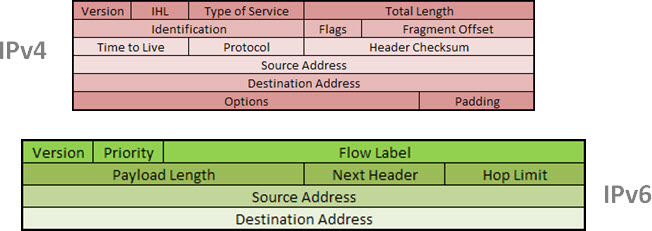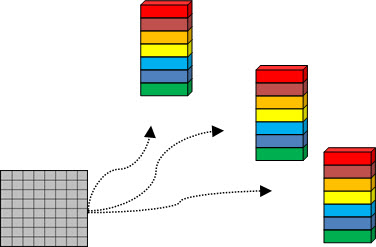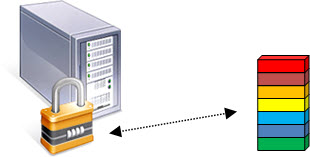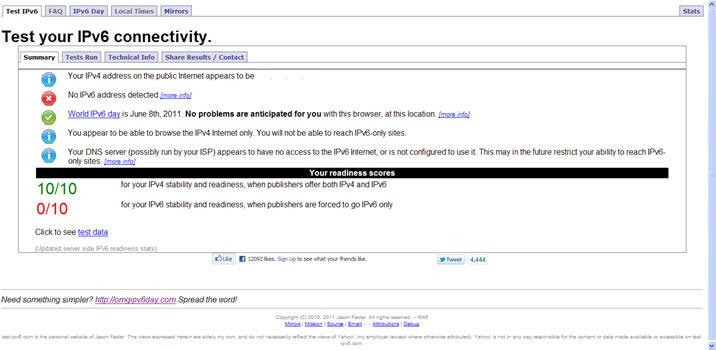Introduction
You’ve probably heard of IPv6. These little letters, increasingly known, will bring up a number of innovations and changes that should occur gradually over the World.

Changes that for sure will affect you, directly or indirectly - mainly due to the benefits that it provides.
In Telecommunications area, the universe related to IPv6 is also increasingly in focus, and this subject for sure will be present to All of us in near future.
So let’s talk a little about it?
What is IP?
To begin, let’s first remember a little about IP. Simply put, IP (Internet Protocol) is the standard that controls the routing and structure of data transmitted over the Internet. It is the protocol that controls the way devices such as computers communicates over a network.
For two devices to communicate, each one must have an identification. In a cellular network, each device has unique number (eg 8 digits).

With computers we have the same case, only the identification ‘number’ is a little different. Each ‘number’ has 4 parts, and each part can have up to three digits (and again, each part can vary from 0 to 255).
As in cellular networks, we can’t have two devices with the same number on the computers network, each one must have a unique IP that identifies it.
It turns out that today, we have not only computers using IP. And this finite number of possible combinations is no longer sufficient to meet the great demand for these new devices.
And that’s where the problems start: IPv4 …
IPv4
The ‘current’ version of IP is the version 4, so IPV4. It has the format shown above, and was standardized at a time was more than enough to connect Research Centers and Universities - the initial goal of the Internet.
In more technical terms, IPv4 is a sequence of 32 bits (or four sets of 8 bits). The 8 bits can range from 0 to 255 (from 00000000 to 11111111), which gives us a total of up to 4 billion different IP’s (or more precisely 4,294,967,296 IP’s).
Although it is a very large number, we know that is running out.
By the early 90’s for example, most user’s connections to the Internet was through dial-up modems. Currently, with the popularization of the Internet, the picture is quite different. Virtually everybody use ‘Always-On’ broadband connections: The growth of addresses consumption is exponentially increasing.
So, what to do?
Extending the life of IPv4
An alternative, which is not really a solution, is to create ways to avoid conflicts.
In this case, it is common to use techniques or tricks to increase the number of addresses and allow the traditional client server setup, such as:
- NAT (Network Address Translation)
- CIDR (Classless Interdomain Routing)
- Temporary Addresses Assignment (such as DHCP - Dynamic Host Configuration Protocol)
However, these techniques do not solve the problem, only help to temporarily minimize the problem IPv4 limitation. That’s because they do not meet the main requirements of True Network and User Mobility.
Existing applications require an increasing amount of bandwidth, while the NAT represents a considerable impact on the performance of network equipment.
And as mentioned earlier, we now have equipments that needs to be ‘Always On’, that is, ensuring that anyone can be connected at any time. This requirement is an impediment to this address translation.
We also have the problem of plug-and-play equipments, each time more numerous, and with even more complicated protocol requirements.
In short, what happens is that we ended up having a problem: we must choose between ‘allow new services’ or ‘increase network size’.
But we need both, and then what to do?
IPv6
The solution is quite natural: creating a new format, larger than the current one, to meet future demand. And this new format, or new version is the 6. Hence, IPv6 - The Next Generation Internet Protocol. Even that IPv6 is also known as IPng (next generation).
Although the ‘solution’ is apparently simple, its implementation isn’t. Unfortunately, things are not nearly so easy to make that change. Certainly, much work remains to be done, but the bigger problem is just due to those responsible for configuration, or Network Administrators.
There is much controversy about when the world will be ready for IPv6, but it’s certainly the path that must be followed. We should probably have an episode like ‘Millennium Bug’ in 2000, where some people predicted chaos in computer networks.
But back to talking about the new format, it is now a sequence of 128 bits. Using the same calculation used above, we arrive at a total 340,282,366,920,938,463,463,374,607,431,768,211,456 different combinations of IP.
Now yes, a ‘very’ large number: To have an idea, it is 4 billion times larger than the number of current IPv4 format!
To shorten some the format, it will be used hexadecimal notation instead of decimal, used in IPv4. The new format will look like this:
FDEC: 239A: BB26: 7311:3 A12: FFA7: 4D88: 1AFF
Note that an address is still very large, and possibly emerge a way of shortening it.
Advantages of IPv6
To clarify the advantages of IPv6, let’s enumerate some of them.
Much more addresses
The main advantages of IPv6 is the simplest to understand: more addresses available!

Mobility!
In Mobile IPv4, the transmission of data packets is usually based on a triangular routing, where packets are sent to a proxy server before reaching their final destination.
In IPv6, the degree of connectivity is improved (since each one has its unique IP), and each device can communicate directly with other devices, making this type of communication much more efficient.

Auto Configuration
A new feature in IPv6 standard (non-existent in IPv4) allows IPv6 hosts to automatically configure to each other. It is the SLAAC.
The SLAAC (Stateless Address Auto Configuration) helps in the design of networks, making remote settings far more simplified.

Simpler Packet Format
Although IPv6 is much more complex than IPv4 in many other aspects, the format of the packet is simpler in IPv6 - Header has fixed size, and fewer fields.
Thus, the process of forwarding packets for example turn out to be simpler, which increases the efficiency of routers.

Jumbograms
The data flow in a network is not continuous: it is done through discrete transmission of packets. Depending on the information being transmitted, several packets are needed. Because each packet must carry information other than the data itself, we ended up having a ‘wastage’ with these traffic control information, such as those used for routing and error checking.
In IPv4, there is a limit of 65,535 bytes of payload (recalling, octet is a group of 8 bits, eg 11111111).
Today, this limit of 64kB is extremely low compared to the transmitted data. For example, in a simple video transmission, thousands of packets needs to be transmitted - each one with its ‘extra traffic’.
In IPv6, this limit is much higher: 4,294,967,295 octets.
That is, we can send up to 4 GB in a single packet, Jumbograms!

Native Multicasting, Anycast
The transmission of packets to multiple destinations in a single send operation is one of the basic specifications of IPv6.
In IPv4, this implementation is optional.

In addition, IPv6 defines a new type of service, the Anycast. As the multicast, we have groups that receive and send packets. The difference is that when a packet is sent to an anycast group, it is delivered only to one of group member.
More Security - Network Layer
In IPv4, IPsec, an Network Layer Authentication and Encryption Protocol is not required, and is not always implemented.
In the IPv6, we have native support for IPsec, and this implementation is mandatory.

That is, VPNs and secure networks are much easier to build and manage in the future.
IPv6 also does not rely, or has no need for fields of type ‘checksum’ to ensure that the information was transmitted correctly. Now the error checking is responsibility of transport layers (such as UDP and TCP protocols), and one reason is that the current infrastructure is more robust and reliable than several years ago, that is, we have fewer errors during transmission.
The result: easier to implement, greatly facilitating the development of systems such as for the house network-enabled devices.
IPv4 to IPv6 Transition
The transition from IPv4 to IPv6 must happen slowly and gradually. It will only end when there is no more IPv4 device. In other words, this transition will take years.
IPv6 was not designed to replace IPv4, but to solve its problems. It does not have interoperability with IPv4, that is, they don’t ‘match’, but both will exist in parallel for a long time.

So one of the main challenges will be regarded to communication between these networks, which should take advantage of existing IPv4 infrastructure.
Although there’s no ‘interoperability’ with IPv4 not IPv6, they need some way to communicate, ie, IPv6 needs a certain ‘compatibility’ with the previous version.
Suppose two IPv6 hosts wish to communicate with each other, but among them there are only IPv4 hosts. And then, what to do?
One technique that can be used is ‘tunneling’, as shown in figure below.

In this case, the IPv6 packets are re-packetd in IPv4 format, sent through the IPv4 hosts and unpacked when they reach their IPv6 destination.
Of course, in this example, we will not have such features as priority and flow control.
Anyway, this is only a possible technique, and a lot has changed since IPv6 was designed. As more people come to deal with IPv6, it is possible that better solutions emerge.
Test your IPv6
If you want to know if you’re ready for IPv6, a good site is as follows.
There you can get an idea of your IPv6 connectivity through a series of automatic tests, as shown below.
Conclusion
Today we saw a brief overview of IPv6, the Next Generation Internet Protocol.
But now, a very important observation: IPv6 is not totally different from IPv4, or in other words, everything you learned over IPv4 will be very useful when dealing with IPv6.
IPv6 brings many new features compared to the current protocol IPv4.
In summary IPv6 is much better than IPv4 for addressing, routing, security, network address translation, administrative tasks and design, and support for mobile devices.
Of course, at first glance, IPv6 seems to be the solution to all problems. But remember that its implementation will require a lot of work. Anticipating this scenario, IPv6 has a last feature, the definition of a set of possible plans for migration and transition - one of the biggest challenges to be coping in the near future.
The explanations above represent only a simplified summary of this protocol, so you can get an idea of what lies ahead.
Hope you enjoyed! Leave your comment bellow.


